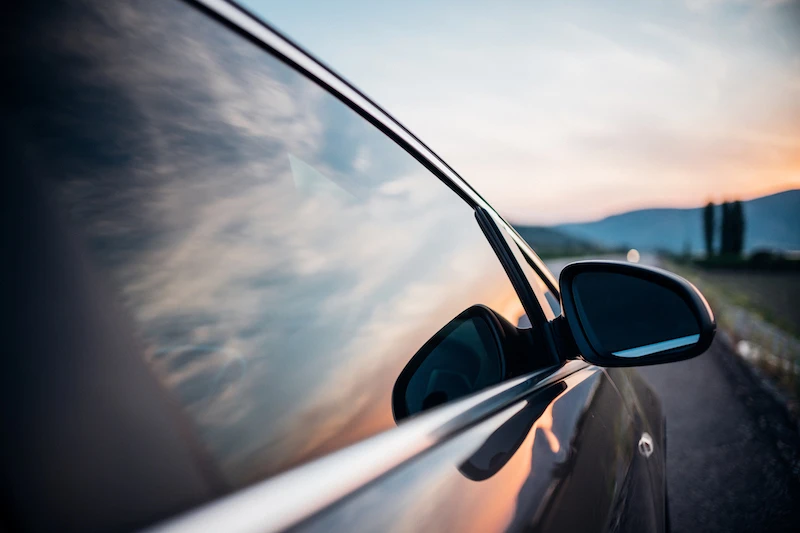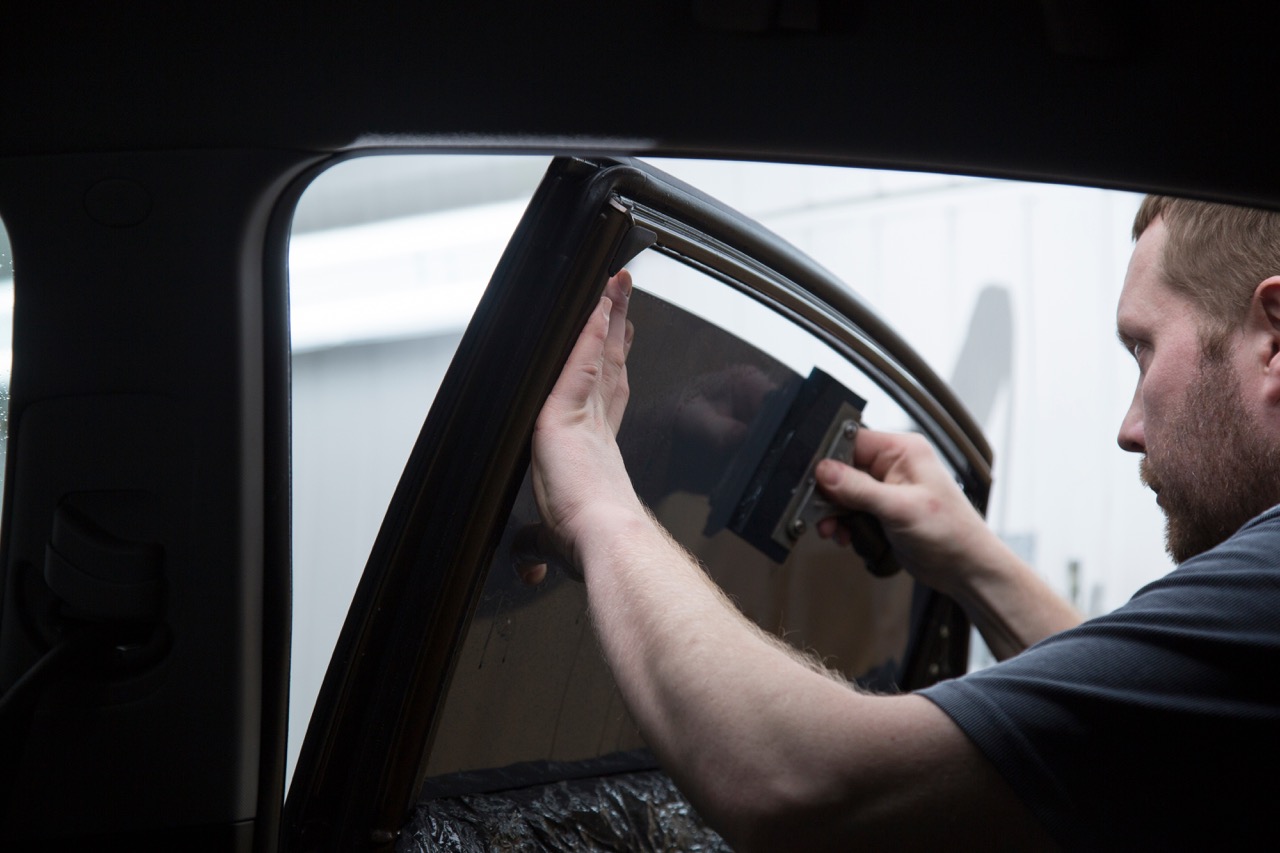Recognizing the Different Sorts of window tinting Offered for Cars
Recognizing the Different Sorts of window tinting Offered for Cars
Blog Article
Necessary Elements to Think About When Choosing Home Window Color for Your Lorry
Selecting the right home window tint for your lorry involves a mindful evaluation of numerous important variables that can substantially influence both legality and functionality. Recognizing neighborhood policies concerning Visible Light Transmission (VLT) is paramount to avoid potential fines. The selection of window tints differs commonly, incorporating choices that supply varying levels of UV protection and warm denial, each with unique advantages. Furthermore, the choice between professional setup and do it yourself methods can influence both price and high quality. Each of these elements plays a vital duty, however there are still factors to consider that might surprise you.
Lawful Regulations and Restrictions

For instance, some states allow darker tints for rear windows while enforcing stricter restrictions on front home windows. Additionally, guidelines may determine specific colors or products that can be utilized, restricting metal or reflective colors in certain cases.
It is necessary to consider not just the aesthetic wishes yet also the capability and safety and security effects of window tinting. Legal constraints frequent place to make sure exposure for both the driver and police. Before installment, vehicle owners need to familiarize themselves with their local laws, which can often be discovered on state transport web sites or through neighborhood police. Following these laws will certainly assist make sure compliance and prevent prospective lawful issues.
Kinds of Window Color
Home window color can be found in various kinds, each developed to fulfill various requirements and preferences. One of the most typical types include dyed, metalized, ceramic, and hybrid colors.
Colored window tint is preferred for its aesthetic appeal, giving a consistent appearance while lowering glare. It uses minimal warmth being rejected and might discolor over time. Metalized tint, on the other hand, includes metallic fragments that reflect warmth and UV rays, enhancing durability and providing premium performance. This kind can disrupt electronic signals, which is an essential factor to consider for those who rely upon general practitioner or cell function.
Ceramic home window tint is a premium option, using outstanding heat denial and UV defense without compromising visibility. Its non-metallic building and construction ensures that it does not conflict with electronic signals, making it an ideal selection for modern lorries. Hybrid colors incorporate the advantages of dyed and metalized movies, providing a balance of visual appeals and performance.
When selecting a home window color, it's vital to consider each type's characteristics and exactly how they align with your particular needs for privacy, warm denial, and looks.
UV Protection and Heat Denial
A substantial variable to think about in window tint selection is the degree of UV protection and heat being rejected it offers. Selecting a window tint that uses high UV security is necessary for safeguarding both residents and the automobile's products.
Along with UV defense, warm denial is one more critical element. Colors furnished with sophisticated innovation can reflect and soak up solar energy, maintaining the lorry colder and minimizing dependence on cooling. window tinting. This not just More Help improves comfort but can likewise result in enhanced gas efficiency, especially in hot environments
When evaluating various tint options, look for those with a high Noticeable Light Transmission (VLT) percentage while keeping efficient UV and infrared warm denial abilities. Products that fulfill these criteria usually show premium quality and performance, making certain that your vehicle remains a comfortable and safe environment. Eventually, buying reliable home window color that excels in UV defense and warm being rejected will certainly produce lasting advantages for both health and wellness and vehicle upkeep.
Setup Methods and Costs
Choosing the right home window tint includes not only understanding its protective attributes but also taking into consideration the installation techniques and connected prices. Expert installment normally guarantees a high-quality surface, as knowledgeable specialists guarantee that the color is used efficiently without bubbles or imperfections.
On the other hand, do it yourself sets are offered at a lower cost point, usually in between $50 and $150. They require a particular degree of skill and patience, as inappropriate application can lead to disappointing results (window tinting). It's vital to follow the supplier's instructions diligently and allow ample time for setup
Additionally, think about the prospective expenses of removing or changing incorrectly installed tint, which can rise quickly. Inevitably, picking one of the most appropriate installation technique pivots on stabilizing spending plan constraints with the wish for high quality, durability, and visual charm of the home window tint.
Maintenance and Durability
Appropriate maintenance is vital for ensuring the durability of your automobile's home window tint. Regular cleansing and treatment can dramatically influence the appearance and durability of the color - window tinting. It is recommended to wait at the very least a week after installation prior to cleansing the home windows to allow the sticky to cure fully
When cleaning colored windows, utilize a soft microfiber fabric and a gentle, ammonia-free cleaner. Severe chemicals can deteriorate the tint, resulting in peeling off or discoloration. Avoid making use of rough products, as they can damage the surface Discover More Here and endanger the tint's honesty.

Evaluate your home window color frequently for any kind of signs of damages, such as gurgling or discoloration. Early discovery allows for timely repairs, maintaining the tint's performance and visual appeal. By sticking to these upkeep techniques, you can improve the longevity and visual quality of your vehicle's home window tint, guaranteeing it continues to be a appealing and functional feature for several years to come.
Verdict
In conclusion, selecting the proper window color for a lorry necessitates cautious consideration of various aspects, consisting of lawful guidelines, types of tint available, and the twin benefits of UV security and warmth denial. Regular maintenance is crucial to ensure the longevity of the tint.
Picking a home window color that provides high UV security is necessary for safeguarding both passengers and the vehicle's materials. Eventually, spending in reliable home window tint that succeeds in UV defense and heat being rejected will generate lasting advantages for both health and car maintenance.
Appropriate maintenance is crucial for making certain the long life of your automobile's window tint. By adhering to these upkeep practices, you can boost the longevity and visual top quality of your car's window tint, guaranteeing it remains a practical and eye-catching feature for years to come.
In verdict, selecting the ideal window color for a vehicle demands mindful factor to consider of various aspects, consisting of legal policies, types of color available, and the double advantages look at this now of UV protection and heat denial.
Report this page